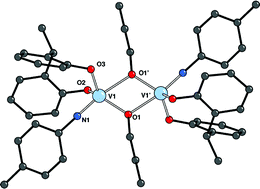Vanadium-based imido-alkoxide pro-catalysts bearing bisphenolate ligands for ethylene and ε-caprolactonepolymerisation†
Abstract
The pro-

- This article is part of the themed collection: Metal-Catalysed Polymerisation
* Corresponding authors
a
Energy Materials Laboratory, School of Chemical Sciences and Pharmacy, University of East Anglia, Norwich, UK
E-mail:
carl.redshaw@uea.ac.uk
b Chemistry Department, Loughborough University, Loughborough, Leicestershire, UK
The pro-

 Please wait while we load your content...
Something went wrong. Try again?
Please wait while we load your content...
Something went wrong. Try again?
A. Arbaoui, C. Redshaw, D. M. Homden, J. A. Wright and M. R. J. Elsegood, Dalton Trans., 2009, 8911 DOI: 10.1039/B902402F
To request permission to reproduce material from this article, please go to the Copyright Clearance Center request page.
If you are an author contributing to an RSC publication, you do not need to request permission provided correct acknowledgement is given.
If you are the author of this article, you do not need to request permission to reproduce figures and diagrams provided correct acknowledgement is given. If you want to reproduce the whole article in a third-party publication (excluding your thesis/dissertation for which permission is not required) please go to the Copyright Clearance Center request page.
Read more about how to correctly acknowledge RSC content.
 Fetching data from CrossRef.
Fetching data from CrossRef.
This may take some time to load.
Loading related content
